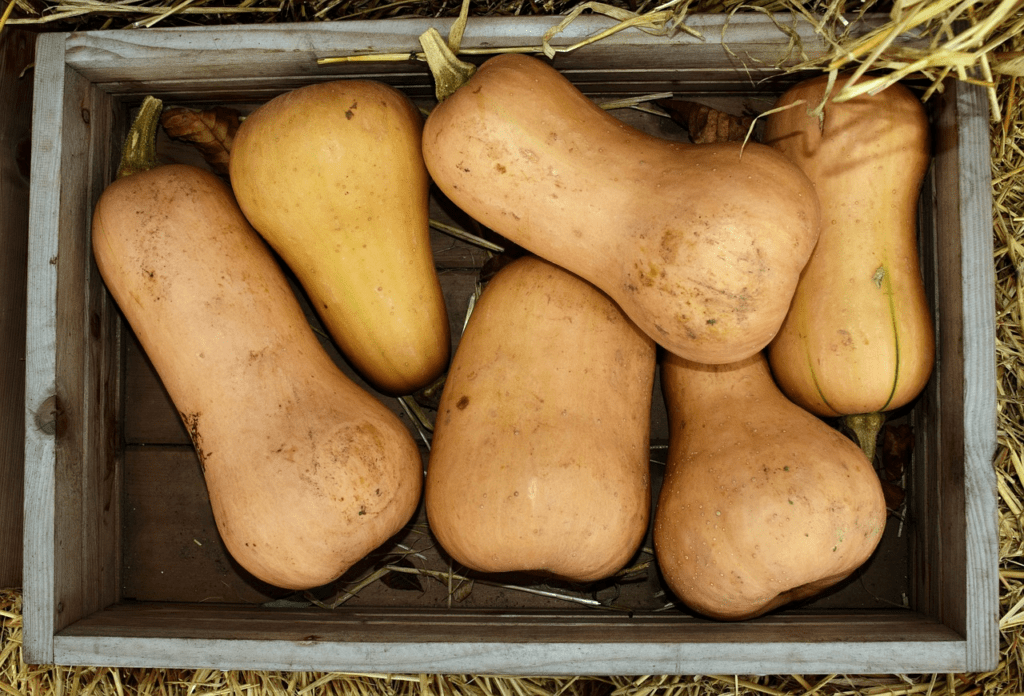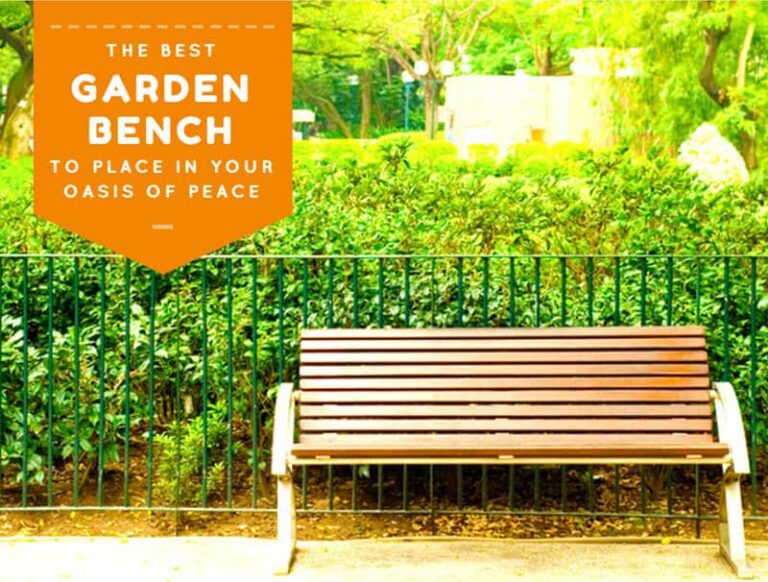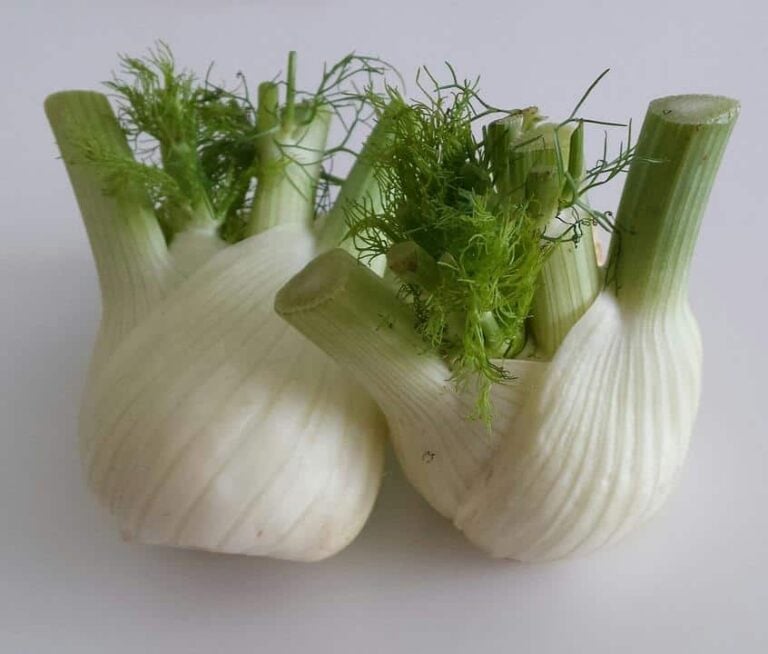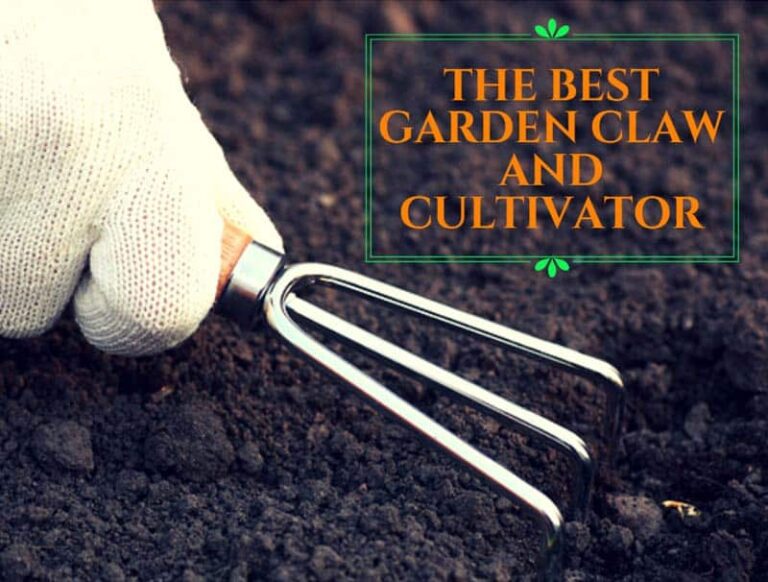A Guide on When To Harvest Butternut Squash
Among the many squash varieties that can be grown in an indoor or outdoor garden, a type that I really like is the butternut squash. I only discovered this variety a few years ago, but I have to admit that a mature butternut squash is one of my favorite types of squash.

Butternut squash is not only delicious, it is also easy to cultivate and grow, it is rich in nutrients and vitamins and is low in calories, being perfect to use in many diet menus. And then, the sweet taste of the flesh makes butternut squash ideal for both salty and sweet dishes. If you want to grow a butternut squash or any other vegetables indoors, there are many possibilities! If you’re looking to grow multiple vegetables, especially with tomatoes, you can a have a full garden full of companions!
If this is the first time you consider growing butternut squash, one of the main questions you will have is when to harvest butternut squash? The answer is simple, Butternut squash is ready to harvest when the skin is hard, can not be punctured with the thumbnail, and uniformly tan in color.
When harvesting butternut squash, leave a 1-inch stem on each fruit, but there are a few things to consider about harvesting and storing this delicious vegetable. Let’s have an in-depth look at when and how to harvest butternut squash.
Table of Contents
When To Harvest Butternut Squash
Butternut squash is a type of winter squash, its harvesting period beginning in September and ending in late autumn or in early winter. However, determining when to harvest butternut squash is essential if you don’t want to harvest the unripe fruit or to avoid having your squash ruined by cold and humidity.
In fact, the temperature plays an important role in determining when to harvest butternut squash, and all the other types of winter squashes as a matter of fact. If there is any reason to believe that a frost is expected, you should proceed with the harvesting of the squash even if the fruit is not fully ripe.
On the other hand, the longer the time the butternut squash matures and ripens in the sun, the longer the preservation period. For this reason, experts advise to let the butternut squash ripe on the vine for as long as possible. A mature butternut squash also tastes better than an unripe one, being sweeter and softer.
To determine when to harvest your butternut squash, you can use two simple tricks.
1. The first trick is to check the stem of the butternut squash. If the stem is dried and brown in color, then the squash is ripe, and you should harvest it.
2. The second trick is to try to push your fingernail into the skin of the butternut squash. If the skin is tough and you have difficulties in pushing your fingernail into it, it could also mean that it is time to harvest.
The color of the skin is another indicator that the butternut squash is ripe and ready to be picked. Butternut squash has a solid tan or a tan/orange shade when mature, depending on the variety. Also, the skin of the squash usually turns dull when fully ripe, while a shinier skin indicates that the fruit should still mature.
Another easy method to determine if it is time to harvest is to monitor the size of the butternut squash. Now, you have to understand that I’m not speaking about measuring the squash but about observing when it stops growing. When the butternut squash is not growing anymore, it might be the time to harvest. Use the above methods to determine if the fruit is mature enough or not before proceeding to harvest.
Speaking of the length, butternut squash is usually ripe when it reaches a length of 8 to 12 inches. Nevertheless, the final length is determined by the type of soil in which the squash grows and the fruit can be shorter or longer when fully ripe. For this reason, the harvesting moment should be determined as described above.
Even if the butternut squash is ripe, you can decide to let the fruits mature for another few days to extend the preservation period. If you do this, like I already said, pay attention to harvest before the first frost. You should also keep the butternut squash away from excessive humidity, or it might rot.
If the season is rainy and you want to harvest on a sunny day, you can place two wooden boards or four bricks under the squash to avoid keeping it in contact with the damp soil.
Since butternut squash should be harvested close to the beginning of the cold season, you might notice that sometimes the first frost is predicted before the harvesting period and your squashes might be unripe.
If this happens, don’t panic. You will be able to save your precious crop following the easy steps below.
First of all, it should be said that even if many gardeners advice to leave the squashes on the vines throughout the first frost, this is nothing but folklore. The frost can, and probably will, damage the butternut squash. For this reason, you should harvest the unripe squash instead of leaving it in the cold.
Here is what to do:
- The morning before the predicted first frost harvest the unripe butternut squashes, paying attention to leave several inches of the stem attached to the fruit.
- Store the harvested squashes in a warm and humid place for 10 days. The moisture level should be around 80% and the temperature between 80 and 85°F. This procedure will help the unripe squashes mature.
- Transfer the butternut squashes in a cool and dark place for storage, then store them as you would normally do with ripe butternut squashes.
The process above is called curing, and even if the steps are easy, some amendments should be made.
You should know that butternut squash ripened in this way will probably rot earlier than the squashes that are harvested fully ripe. For this reason, you should consume these squashes as quickly as possible.
On the other hand, the maturation period will not improve the flavor of the squashes. They will be less sweet and less flavored, so more appropriate for salty dishes.
Although some gardeners promote it, in my opinion, curing is unnecessary for squashes harvested fully ripe. If you really want, you can leave those squashes outdoors in full sunlight for a couple of days to dry their skins before storing.
How To Harvest Butternut Squash
Even if it might be tempting, you can’t harvest butternut squash by just twisting and pulling it from the vine. There are two reasons why you shouldn’t do that.
The first reason: because the squash can get damaged.
The second reason: because if the squash is pulled without the stem, it might rot quicker.
Therefore, the right way to harvest butternut squash is by cutting the fruit from the vine with a pair of garden shears or scissors. You should leave a few inches of the stem attached to the squash, to prevent early rotting.
If any of the squashes you harvested is damaged or has the stem completely removed, it should be consumed as quickly as possible because it will not store well.
If you notice any squashes that are damaged before harvesting, or if you notice that some squashes are overripe, you should consider using them for compost.
After harvesting, the next step to think of is the storage of your delicious butternut squashes. So, let’s see how to do it.
How To Store Butternut Squash
Butternut squash, just like the other types of winter squashes, should be stored in a dry and cool place, such as a basement or a cellar.
Many gardeners suggest leaving the freshly harvested butternut squashes at room temperature (about 70°F) for a week or two to completely harden their skin. It is not recommended to leave them outdoors for all this time as insects might attack them.
Once the squashes are completely dried, move them into the basement, into a cellar or into a cool and dry room and store them at temperatures between 40 and 50°F. You can preserve the butternut squash in this way for up to six months.
Final Thoughts on When to Harvest Butternut squash
Now, you know not only how and when to harvest butternut squash, but you also know how to store it for a long time. Don’t forget to check the temperature of the room where you keep the squashes to make sure they will not freeze.
Have you harvested butternut squash before or is this your first time? Do you have any tricks to share with us or any questions to ask? Leave a comment below and share your thoughts with us.
And as the last word, don’t forget that the best time to harvest the butternut squash is at the end of autumn on a sunny day.

Frequently Asked Questions for When to Harvest Butternut Squash
How do I know when my butternut squash is ready to be harvested?
There are a few signs to look for when determining if your butternut squash is ready to be harvested. The skin should be hard and the color should be a uniform tan or beige. The stem should be dry and brown, and the tendrils near the stem should be brown and withered.
Can I harvest my butternut squash too early?
Yes, harvesting too early can result in immature fruit that won’t store well. It’s important to wait until the fruit is fully mature before harvesting.
Can I leave my butternut squash on the vine too long?
Yes, leaving it on the vine for too long can result in overripe fruit that may be difficult to store. It’s important to harvest your butternut squash at the right time to ensure the best quality.
How should I store my butternut squash after harvesting?
It should be stored in a cool, dry place with good air circulation. Avoid storing it in direct sunlight or in a damp area. The ideal temperature for storing butternut squash is between 50 and 55 degrees Fahrenheit.
How long can I store my butternut squash?
It can be stored for several months if stored properly. Check your squash regularly for any signs of rot or decay, and discard any that show signs of spoilage.
Can I eat my butternut squash raw?
While it’s technically safe to eat them raw, it’s not recommended. Raw squash can be difficult to digest and may cause stomach upset. It’s best to cook before eating it.






